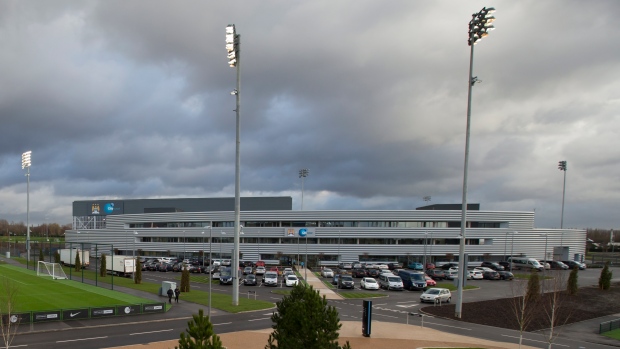Dec 8, 2014
Manchester City opens doors to new $300 million training complex
Six years into their reign and Manchester City's ambitious Abu Dhabi owners continue to change the landscape of English soccer.
The Canadian Press

MANCHESTER, England - Six years into their reign and Manchester City's ambitious Abu Dhabi owners continue to change the landscape of English soccer.
Initially, it was about short-term success, spending more than $1 billion on the squad to move a plucky, underachieving club out of the giant shadow of its city rival Manchester United to the top of the English game. With two Premier League titles and two domestic cups since 2011, that box has been ticked.
Now for the next phase.
On Monday, the English champions officially opened their lavish $300 million training and player-development centre — the City Football Academy. A muddy wasteland with no opportunities in a neglected area has been regenerated into a sprawling, 80-acre state-of-the-art campus.
Connected to the club's Etihad Stadium by a bridge, it houses all of City's teams — from the under 8s to Manuel Pellegrini's senior side — has 16 1/2 pitches, a 7,000-capacity stadium for the City's top youth team along with educational facilities and accommodation.
Forget the recent signings of superstars Sergio Aguero, Yaya Toure and David Silva. City says this facility is the club's most important investment — and unlike anything English football has ever seen.
In a rare public appearance, City chairman Khaldoon Al Mubarak said Monday the academy aimed to be "something that would truly differentiate the club as a leader in the world of football," representing the first stage of fulfilling a promise made when the Abu Dhabi United Group took over in 2008.
Inspiration was taken from AC Milan's Milanello training facility, Barcelona's famed La Masia academy from which Lionel Messi is the most famous graduate, the Australian Institute of Sport and NBA team New York Knicks' MSG Training Center, among others. It isn't, though, a "copy-and-paste job," says academy director Brian Marwood.
There are some special touches. Sleep experts designed the players' bedrooms, there are rooms for cryotherapy and a hypoxic chamber with treadmills where players can train in different temperatures.
"(You want) the club that will give you the best chance," former France midfielder Patrick Vieira, who is the head of City's Elite Development squad, said Monday about attracting the world's best youngsters. "Because at that age, you dream about being a first-team player. I think when you look at these facilities, that will be an easy choice."
United may have something to say about that.
Still the biggest club in England, United has a track record of bringing youngsters through the youth teams and into the first team. Recently hired Dutch coach Louis van Gaal, despite spending $250 million pounds on top, mostly foreign players over the summer, appears intent on continuing that tradition.
During City's recent rise to the top, home-grown players have hardly had a look-in. To many, that needs to change if the new training academy is to be considered a success.
"We know how difficult it will be to make it," Vieira said, "... but when you have a facility like this, you give yourself the chance."
Marwood pointed to the fact that City had two teenagers on the bench in the recent league match at Sunderland, and that 18-year-old Spaniard Jose Pozo played nearly an hour of Saturday's 1-0 win over Everton. Twelve players under the age of 21 are currently out on loan.
Sheikh Mansour, City's owner, said in 2008 that the club's leaders "are building a structure for the future, not just a team of all-stars." The demands of UEFA's Financial Fair Play rules make that a necessity.
Understandably, Vieira didn't want to give a timeframe about when he thought the first academy product would make it into City's top team.
But given his winning mentality as a player and the ambitions of City's owners, expect it to happen sooner rather than later.
